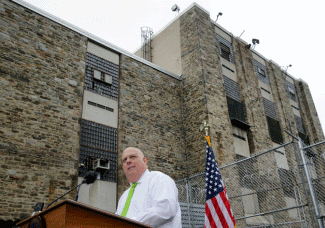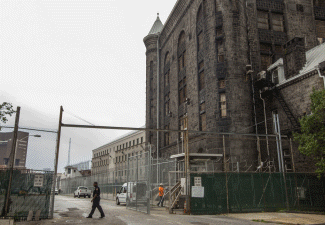by Betsy Kulman
April 23, 2015
NOTICE: THIS WORK MAY BE PROTECTED BY COPYRIGHT
YOU ARE REQUIRED TO READ THE COPYRIGHT NOTICE AT THIS LINK BEFORE YOU READ THE FOLLOWING WORK, THAT IS AVAILABLE SOLELY FOR PRIVATE STUDY, SCHOLARSHIP OR RESEARCH PURSUANT TO 17 U.S.C. SECTION 107 AND 108. IN THE EVENT THAT THE LIBRARY DETERMINES THAT UNLAWFUL COPYING OF THIS WORK HAS OCCURRED, THE LIBRARY HAS THE RIGHT TO BLOCK THE I.P. ADDRESS AT WHICH THE UNLAWFUL COPYING APPEARED TO HAVE OCCURRED. THANK YOU FOR RESPECTING THE RIGHTS OF COPYRIGHT OWNERS.
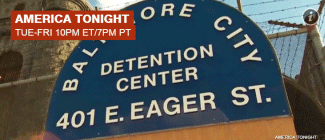
Updated July 30: Calling the Civil War-era facility "notorious," Maryland Gov. Larry Hogan on Thursday announced that Baltimore's Men’s Detention Center was being shuttered immediately. “For years, Maryland taxpayers were unwittingly underwriting a vast criminal enterprise run by gang members and corrupt public servants,” Hogan said in a statement. “Ignoring it was irresponsible, and one of the biggest failures in leadership in Maryland history.” More than 1,000 inmates will be moved to other nearby facilities.
BALTIMORE – The Baltimore City Detention Center is old. It was in business before Abraham Lincoln was president. Ghosts are everywhere –- in the concertina wire lacing the sky, the ancient stone façade, the trash swirling on the sidewalk, and the white door with a small barred window set hard on the street. It was once said that inmates who walked up the steps and through that jail door exited on a gurney.
The jail was also, until recently, run by a gang.
“Everything is drugs. The gangs were just, basically, the face of the drug dealers," said Ralph Johnson, who was a corrections officer at BCDC for 18 years and a supervisor for most of that time. "…Nobody cared. You're going to an environment where people are trying to survive. People are trying to make money. People are just trying to stay out the way.”
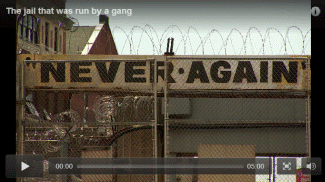
The jail that was run by a gang 4:56
America Tonight | April 22, 2015
Jail gangs are nothing new. But the gang known as Black Guerrilla Family, which got started inside jails around the country in the 1970s, evolved into something of extraordinary power over the last decade, particularly in Maryland.
At BCDC, heroin, crack cocaine and cellphones flowed in freely from the outside. Tavon White, the gang's kingpin in the jail, fathered five children with four corrections officers. His powerful influence reached the streets, where he coordinated drug deals and proclaimed he could order a hit on any former inmate or employee who didn't join the BGF gang. Recorded on a wire tap, he proclaimed, "This is my jail" and "I am the law."
A few years ago, Wendell “Pete” France, a retired city police commander, was brought in to run BCDC. He quickly realized that the corruption ran far too deep for the city to handle.
"We had a very dangerous facility here," said France, now the deputy secretary of operations for the Maryland Department of Public Safety and Correctional Services. "We had a facility that jeopardized the life and safety of not just the inmates that we're responsible for protecting, but more importantly the people we ask to come to work every day."
France called in the feds. The U.S. Attorney’s Office conducted a three-year investigation into the Black Guerrilla Family conspiracy at BCDC. And in the last 18 months, dozens of gang members and their associates have been convicted. It's the largest prison conspiracy case in recent history, and it left Maryland officials scrambling to understand how it could have gotten so bad and what could stop it from happening again.
Sex, drugs and money
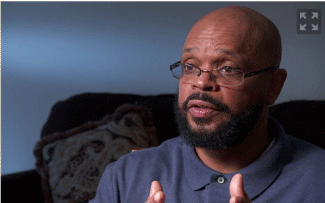
Ralph Johnson was a supervising corrections officer at the Baltimore City Detention Center for almost two decades.
Around a decade ago, the BCDC started hiring young corrections officers –- some as young as 18 -– to address a shortage of qualified applicants willing to take the low-paying, entry-level jobs. The jail also thought newcomers would be less prone to corruption than some of the veteran officers they were replacing. It backfired.
These young corrections officers were untrained, inexperienced and vulnerable.
"How can you put an 18-year-old that does not have any experience in life, and you put him on a section of 120 inmates, seasoned inmates, and expect that nothing is going to happen to that child?" said Johnson, who wrote a book about his experience at the jail. "…They would eat 'em alive. They would manipulate 'em. They would have sex with 'em."
The corrections officers smuggled in phones, tobacco, Percocet pills, marijuana and much harder drugs to members of the Black Guerrilla Family. And with all that contraband came a lot of power.
"First, they abuse other inmates," Johnson said. "It's just something about this seduction of power. A lot of them have been abused all of their life. A lot of them have been the victim … It gives them some type of, 'I have arrived. I have some type of purpose.'"
Baltimore has one of the highest violent crime rates in America. That's led to crowded jails, where prisoners can serve years before heading to a permanent prison, allowing problems to take root.

Tavon White was the ringleader of the Black Guerrilla Family in the jail.AP
White, the Black Guerrilla Family kingpin -– at least inside BCDC –- was dating four corrections officers.
"He had one woman that was fixing him home cooked meals every day," Johnson said. "He had one woman that was smuggling him personal Percocet pills that he could take for himself, or Syrah wine." Even lobster was smuggled into the jail.
The women provided him with so much contraband, and his power was so complete, White was never searched while in the jail. With the cell phones he was given, White was able to talk to corrections officers and coordinate drug pick-ups. During his incarceration from 2009 to 2013, White bought five cars including two Mercedes and a BMW, according to the U.S. Attorney’s Office.
Katera Stevenson, a corrections officer who had one of Johnson's children, drove one of those fancy cars and helped White orchestrate gang business. She had White's name tattooed on her wrist. Another officer had White’s name tattooed on her neck.
Many of the jail's employees did the Black Guerrilla Family's bidding under threat. The gang had enough connections outside the jail that workers didn’t feel safe when they went home for the night.
Many gang associates also did it for the money.
“Everybody was making money," said Johnson. "Katera Stevenson, she said she's making $16,000 a week."
The clean up
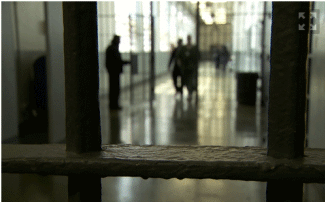
America Tonight was given a rare glimpse inside the Baltimore jail itself. America Tonight
The gang’s deep power stemmed from the porous nature of the Baltimore city jail’s location in the center of several poor neighborhood projects. Johnson described BCDC as an extension of the neighborhood living room.
"The [housing] projects are basically almost structured like the jail system, so the transition is an easy transition," he said. "It's not really a deterrent anymore because if I'm living in East Baltimore with no cable, with the gas and the electric cut off, and I'm living from house to house, okay, lock me up, so what? I have cable, I have three meals, I have heat."
Johnson says the BCDC was itself a neighbor, so much a part of his formative years growing up nearby, it was almost as if he wanted to go to jail. He says that at age 13 or 14, he would ride his bike by there and stop and talk to the prisoners through the windows, just to get an idea of the language they used.
"If you remove gang members from the community, but you put them in a jail in the community, where they still have the ability to influence activity on the outside, you haven't solved the problem,” said U.S. Attorney Rod Rosenstein, who oversaw the convictions in the conspiracy. "… Jails are not islands unto themselves."
Today, standing in front of the BCDC, you can spot broken windows with nylon lines hanging out of them, blowing in the breeze. They’re for “fishing,” where someone on the street or in the yard ties contraband to the end of the line to be hauled up. Johnson says it still happens today, even after the federal convictions of 40 members of the Black Guerrilla Family and their associates, including 24 corrections officers.
Baltimore City Detention Center
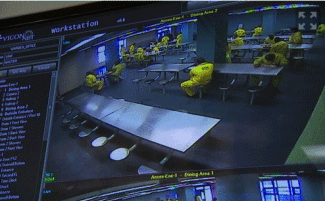
The surveillance system the jail installed after the scandal. America Tonight
Both Tavon White and Katera Stevenson pleaded guilty to federal racketeering conspiracy charges. The U.S. Attorney’s office worked plea agreements for both; White was sentenced to 12 years in prison followed by three years of supervised release, and Stevenson received two years in prison and three years of supervised release.
Nationally, headlines about prison corruption pop up practically every week. “America Tonight” attempted to quantify the problem, but we discovered that no one is tracking it.
With no information found at the state level, America Tonight contacted the U.S. Department of Justice. The agency explained over email that it doesn't track information on criminal charges filed against prison guards.
"The general problem of smuggling of contraband into jails and prisons is a nationwide problem," Rosenstein said. "If we're really about preventing violence, preventing crime on the streets, we need to focus our attention on what happens while the inmates are behind bars."
Since the Baltimore corruption scandal, the city's jail has undergone a massive overhaul. Dozens of officers who were not indicted were either fired, retired or quit. The jail invested millions in new technology, with surveillance cameras everywhere. Polygraphs are now routine for the officers and cell phone calls are blocked.
Maryland has also created a prison corruption task force to specifically investigate claims of corruption in the state's prison system.
For Johnson, these reforms, and speaking out about the jail's dark gang history, aren't about law and order. They're about compassion.
"You have youngsters who come in the jail environment who have parents who care about them, and I don't want these youngsters … jeopardizing their life for anybody else's life," he said. "I want them to have a good career and go home to their family. So if I'm criticized for trying to provide an environment of safety, for inmates and officers, then well, that's my job as a correction officer. That's my job as a citizen.”

